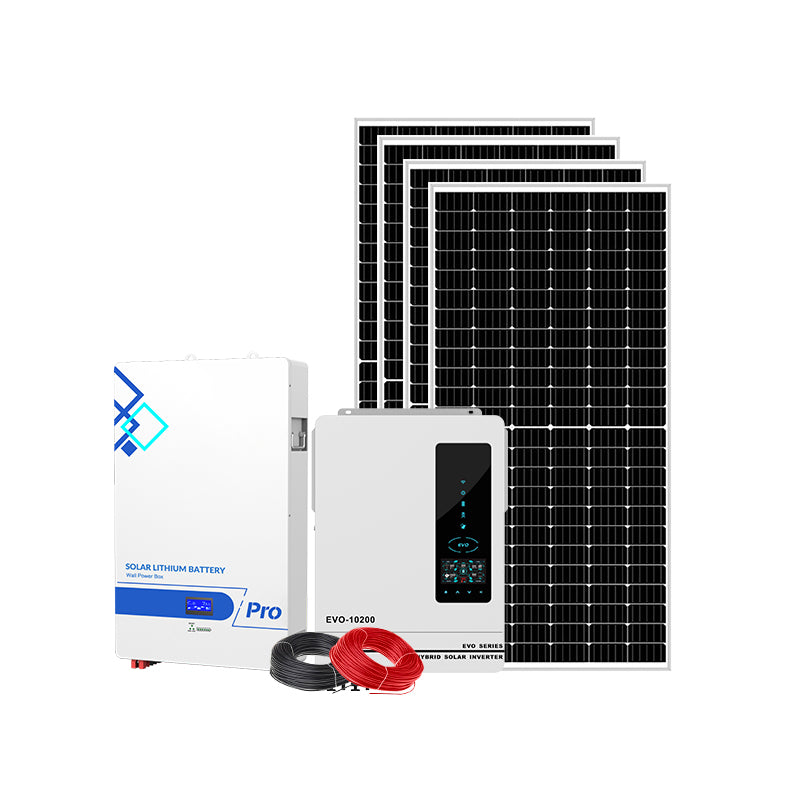As the world increasingly turns toward sustainable energy, off-grid solar power has emerged as a viable and reliable alternative to traditional electricity sources. Thanks to rapid technological advancements and a significant reduction in the price of solar panels, living independently from the electricity grid is more affordable than ever. This handbook serves as a comprehensive guide for anyone considering the move to energy independence, covering everything from residential cabins to large-scale commercial operations.
Understanding Off-Grid Solar Power
An off-grid solar system, also known as a stand-alone power system, operates independently of the public utility grid. It generates electricity from sunlight, stores it in batteries, and provides power as needed, making it an ideal solution for remote locations or for those seeking complete energy self-sufficiency. These systems offer numerous benefits, including energy independence, long-term cost savings by eliminating electricity bills, and a significantly reduced environmental impact.
The Core Components of an Off-Grid System
A successful off-grid solar installation relies on several key components working together seamlessly. Understanding each part is the first step toward designing a robust system.
- Solar Panels: These are the foundation of your system, responsible for converting sunlight into direct current (DC) electricity. The two most common types are monocrystalline and polycrystalline. Monocrystalline panels are generally more efficient and perform better in low-light conditions, making them ideal for situations where space is limited, while polycrystalline panels are a more budget-friendly option. For a detailed comparison to help you make the best choice, see our article: Choosing the Best Solar Panels for Your Off-Grid Setup.
- Battery Bank: Batteries store the energy generated by your solar panels for use at night or during cloudy periods. The capacity of your battery bank is critical and should be sized to provide enough energy to meet your needs for a predetermined number of autonomous days. Common types include lead-acid and lithium-ion batteries.
- Charge Controller: This device regulates the flow of electricity from the solar panels to the batteries, preventing overcharging and ensuring the health and longevity of your battery bank. MPPT (Maximum Power Point Tracking) controllers are a more advanced and efficient technology that optimizes the charging process.
- Inverter: The inverter is the heart of the system, converting the DC electricity stored in your batteries into alternating current (AC) power, which is the type of electricity used by most standard household and commercial appliances. High-quality inverters are essential for handling the startup surges from demanding appliances. To learn more about the top options available, read our In-Depth Review: The Best Off-Grid Solar Inverters on the Market.
- Backup Generator (Optional): While a well-designed system should minimize its use, a backup generator is an essential part of a reliable off-grid setup, providing power during extended periods of bad weather or unusually high demand.
Designing Your System: The Path to Energy Independence
The design of a stand-alone power system is a balance between the solar array, battery storage, and inverter capacity. The most critical aspect of any off-grid system design is ensuring sufficient energy storage, often referred to as "days of autonomy." A system with at least two days of autonomy can store enough reserve energy to power your property without sun, preventing reliance on a backup generator. According to Towards Tomorrow Energy, this is a critical design feature that many inexperienced installers overlook.
Modern off-grid systems are typically designed using 'AC Coupling,' which allows your property's energy needs to be supplied directly from the solar panels during the day. This is more efficient than older 'DC Coupled' systems that draw all power from the batteries, and it helps to extend battery life considerably. For a detailed walkthrough of the entire process, from calculating your loads to selecting components, explore our Step-by-Step Guide to Designing Your Own Off-Grid Solar System.
Sizing Your System: From Tiny Homes to Commercial Operations
The size of your off-grid system depends entirely on your daily energy consumption. The first step is to conduct a thorough energy audit, listing all electrical appliances and their daily usage to calculate your total kilowatt-hour (kWh) needs. Here are some examples of system sizes and their typical applications, as outlined by Towards Tomorrow Energy:
- Small Scale (3-5 kWh/day): Ideal for RVs, tiny homes, or small cabins, these systems can power basic loads like LED lighting, a small fridge, laptops, and a water pump.
- Residential (10-24 kWh/day): Suited for small to medium-sized homes, these systems can handle standard household appliances, including an efficient fridge/freezer, washing machine, computers, and televisions. Larger systems in this range can support electric ovens and coffee machines.
- Large Residential & Rural (48-96 kWh/day): Designed for large family homes or rural properties with workshops, these systems can power a modern home with multiple appliances, power tools, water pumps, and even inverter air conditioning systems.
- Commercial Systems (120+ kWh): These are typically custom-designed three-phase systems for businesses, farms, or large lifestyle properties with significant energy demands.
For businesses considering the switch, specific challenges and opportunities exist. To learn more, see our dedicated guide: Off-Grid Power Solutions for Businesses: A Commercial Buyer's Guide.
Financial Considerations: Analyzing Your Return on Investment
While the initial investment for an off-grid solar system can be significant, it offers substantial long-term financial benefits. By generating your own power, you eliminate monthly electricity bills and protect yourself from rising energy costs. The payback period depends on various factors, including the system's cost, your energy consumption, and available government incentives. A detailed financial analysis is crucial to understanding the long-term value. For a deeper dive into the numbers, read our article: Cost vs. Benefit: Analyzing the ROI of an Off-Grid Solar System.
Types of Photovoltaic Systems
It's helpful to understand where off-grid systems fit within the broader landscape of solar technology. According to the Whole Building Design Guide, there are three common types of photovoltaic systems:
- Grid-Tied without Battery Backup: The most common type, where the system is connected to the utility grid and does not store energy.
- Grid-Tied with Battery Backup: A hybrid system connected to the grid that includes battery storage for emergency power during outages.
- Stand-Alone with Battery Backup: A true off-grid system that is not connected to the utility grid and relies entirely on solar generation and battery storage.
Conclusion
Making the switch to an off-grid solar power system is a significant step toward energy independence, sustainability, and long-term financial savings. From small residential setups to large commercial installations, the technology is more accessible and reliable than ever before. By carefully assessing your energy needs, choosing high-quality components, and focusing on a robust design with sufficient autonomy, you can build a system that will reliably power your life for years to come.






Leave a comment
All comments are moderated before being published.
This site is protected by hCaptcha and the hCaptcha Privacy Policy and Terms of Service apply.